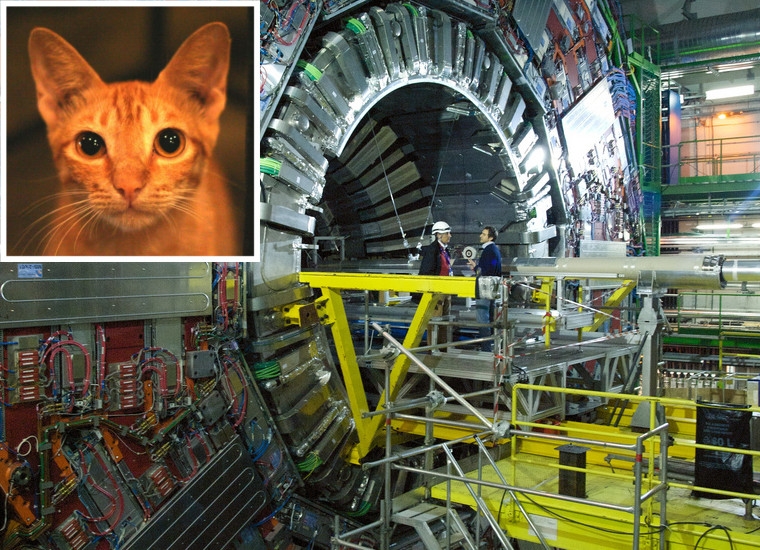


GENEVA, SWITZERLAND – Researchers at CERN, left with little to do after completing the majority of experimentation toward the confirmation of the Higgs Boson, put a live cat into the Large Hadron Collider on Tuesday, just to see what would happen.
“Science is a constant struggle to cast light on new unknowns,” said Dr. Luc Guillemot, 36, the scientist at CERN who first proposed the bold plan to just throw a cat into the multi-billion dollar international nuclear experimentation apparatus.
“Humanity need no longer wonder about the effects of near absolute zero temperatures and the bombardment of super high energy particles have on the common felis domesticus. Our preliminary data shows that the brave, Dr. Whiskers PhD, was, scientifically speaking, absolutely fucking obliterated.”
“It was goddamn amazing,” Guillemot added.
Despite this pioneering feline research at the quantum level, the experiment did not yield the expected “Schrödinger’s cat” results, although some scientists have said that the cat existed for a few nanoseconds in a superposition between “triple-vaporized” and “balls-to-the-wall ka-blammo’d”.
CERN director, Dr. Rolf-Dieter Heuer, said the experiment has spurned a new grant writing frenzy amongst his colleagues.
“This line of research has reminded us here at CERN of something Carl Sagan used to say, that the beauty of an object is not the atoms that go into it, but the way the atoms are put together, and then systematically torn apart by the very highest technology known to man,” said Heuer.
Researchers agree the next step is a comparative analysis elucidating the connection between the size and density of the animal to the “cat standard” scale of explosion awesomeness.
“I’m proposing we do a shark!” said Guillemot. “But some of my colleagues on the ethics board think a more humane option would be a bear or a gorilla, which is easier to transport and keep alive until we shove it into the massive particle accelerator.”


